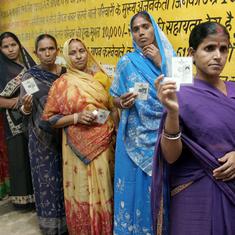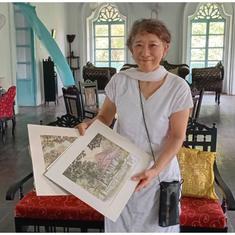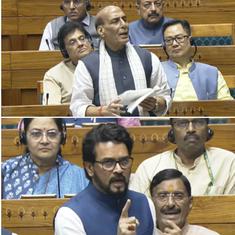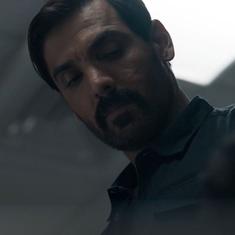In June 2005, a bus carrying 150 people left Madi, a village on the edge of the Royal National Park in Chitwan, and headed toward Narayangadh. Eight kilometers into the journey, Krishna Adhikari hailed and boarded the bus. The bus had travelled for less than 15 minutes when an explosion ripped through it on the dry bed of the Bandarmudhe River. Maoist rebels had triggered a bomb from 200 meters away.
Adhikari remembers his ears ringing from sound of the explosion. He lost consciousness and woke up in Chhauni Hospital in Kathmandu the next day. His friends showed him the day’s newspapers: 38 killed, 72 wounded.
It was the single-most lethal Maoist attack of the conflict, and it sparked an outcry over the killing of civilians, most of whom were women and children. Adhikari’s life changed forever that day – the blast broke his spine in three places and shattered the bones in both of his legs. One of his legs never healed and he has lived with a disability ever since. “I can’t even sit on the floor to eat rice anymore,” he said. “I used to be a farmer. I still call myself that but there isn’t a lot of farming I can do.”
Adhikari is one of the 53,000 victims who have filed complaints with the Truth and Reconciliation Commission, established to “investigate truths relating to those who were involved in gross violation of human rights and crimes against humanity during the conflict.”
A second body, the Commission of Investigation on Enforced Disappeared Persons, has also been established with a similar mandate. As these two historic commissions carry out their work, victims like Adhikari are asking whether they will be able to provide answers and deliver a semblance of justice.
Better than nothing
When the government and their Maoist opponents signed the Comprehensive Peace Agreement to end the decade-long conflict in 2006, they agreed to form a “high-level” truth and reconciliation commission and a body to investigate the cases of disappearance.
Such commissions have been set up in other countries after a period of conflict to make amends to victims and establish an accurate account of events with the aim of preventing a recurrence of violence.
At their best, truth commissions can end impunity, administer justice and provide reparations and support to victims, and begin the process of reconciliation around an agreed historical truth. Commissions across the world have, however, had mixed success at achieving these, at times, conflicting goals.
The formation of the commissions in Nepal faced long delays due to political wrangling linked with perpetrators’ fear of prosecution. When the details were finally hammered out in 2014, legislators involved in drafting the bill said the parties weakened it to protect the perpetrators.
“We had drafted a strong bill,” said Pushpa Bhusal of the Nepali Congress who sat on the drafting committee. “But the Congress, UML [United Marxist Leninist], and Maoists stripped it down.”
The bill contains amnesty provisions for serious human rights violations that contravene international human rights law. Survivors and families of victims, who feel they have been sidelined throughout the transition process, challenged the bill in the Supreme Court.
The court ruled key clauses that would allow the commissions to recommend amnesty for perpetrators of serious human rights violations unconstitutional. Since the ruling, human rights organisations and international actors have appealed to the government to amend the Truth and Reconciliation Commission Act to conform to international human rights law and the court ruling.
The government didn’t abide by the ruling and the Truth and Reconciliation Commission and Commission of Investigation on Enforced Disappeared Persons were formed without incorporating the required amendments. Confronted with the government’s refusal to amend the act, the United Nations refused to provide financial and technical support to the commissions.
The victims’ groups faced a dilemma. Realising the transitional justice mechanisms were deeply flawed even before they set out to work, some considered boycotting them before finally settling on an approach of critical engagement.
According to Nawaraj Dhungana, secretary of the Society of Families of the Disappeared Warriors by the State, despite the flaws, the commissions were “better than nothing.”
Pressure and intimidation
Adhikari shared similar misgivings around the structure of the commissions. His concerns were heightened when he saw the Truth and Reconciliation Commission go about its work. In March, the the body's commissioners came to his village for an outreach activity to meet the victims of the bombing. When he arrived at the venue, he saw members of the Maoist party standing outside.
“They were there to monitor what we would say to the Truth and Reconciliation Commission, and they should have been asked to leave,” said Adhikari. “At one point, the perpetrators were inside the building with the commissioners, while the victims were waiting outside.”
The police, who were asked to provide security, soon arrived and the climate became charged. The victims complained that it was uncomfortable to share their personal experiences in the presence of those associated with the perpetrators, and they left.
As cases go, Bandarmudhe is a prominent one because of the number of civilian casualties and undisputed facts. Truth and Reconciliation Commission members have vowed to do right by the victims, but Adhikari is not convinced. “The Truth and Reconciliation Commission has not given us many reasons to trust it,” he said. Two major issues of concern are confidentiality and security.
When the complaint process began, Adhikari decided not to go to the district headquarters, opting instead to file a complaint together with 57 other victims in Kathmandu. The Local Peace Committee chair in Chitwan is the Maoist commander allegedly responsible for the Madi bombing, and victims feared reprisals.
Like many others, Adhikari has questioned the trust placed in the peace committee secretaries to register complaints for the Truth and Reconciliation Commission. The Peace and Reconstruction Ministry created the local peace committees as an all-party mechanism to resolve conflicts locally. The peace committees then appointed the secretaries, effectively making them political appointees. As a result, victims are dubious whether the bodies can safeguard the information when pressured by their party bosses.
The victims’ fears are real. The Conflict Victims Common Platform, which monitored the complaint process in 15 districts, received reports that the secretaries have shared written complaints containing confidential testimony to individuals outside the commissions in Dhading and Khotang.
Perpetrators of past human rights crimes have also resorted to outright intimidation of victims. In several districts, the Nepal Army sent plainclothes personnel to monitor cases filed against it. The army also wrote a letter to the peace committee in Rukum and Jumla asking for complaints filed against it, a blatant and unlawful interference in the work of the commissions. The army has since stated that it stopped this interference, but the chilling effect of intimidation persists.
Pushpa Kamal Dahal, the chair of the Communist Party of Nepal (Maoist Center), or CPN (MC) – and now the Prime Minister of Nepal – has said that he, too, was monitoring complaints filed against him and asked the Home Ministry to send him files in which he is implicated. The Home Ministry does not, however, have oversight over the Truth and Reconciliation Commission. Maoist party members were also involved in monitoring complainants in several districts.
The evidence shows that the perpetrators of wartime crimes exhibited a clear intention to intimidate survivors and undermine the work of the commissions. The preoccupation of the parties with evading criminal prosecution is evident in the nine-point deal between the UML and CPN (MC). Transitional justice issues factor heavily in this deal, and the more recent seven-point deal between Nepali Congress and CPN (MC).
The parties with key figures implicated are pushing hard for amnesty, while parties without key figures implicated have proven willing to trade the victims’ need for justice for political gain, hence the argument that some crimes should be deemed “political cases” and dismissed.
Barriers to participation
A few prominent cases have received extensive media attention, but a vast majority of the victims face a different set of challenges in their interactions with the Truth and Reconciliation Commission and Commission of Investigation on Enforced Disappeared Persons.
Chhido Devi Damaura lives in Lalbojhi, in the Far Western district of Kailali, more than a day’s travel from Kathmandu. Most of the people in this village were formerly bonded labourers, or kamaiya. Though the practice of bonded labour was banned in 2000, most ex-kamaiya continue to live in extreme poverty.
The community is mostly ethnic Tharu, a marginalised group who suffered widespread human rights violations at the hands of state security forces during the conflict. In the neighboring district of Bardiya, they comprised the largest number of persons disappeared by state authorities during that period.
Though Chhido Devi cannot recall the year, she remembers the state of emergency – house raids and arrests were frequent and a climate of terror prevailed. Her husband, Rameshwor, was working in the fields.
Then the paramilitary forces took him away.
“The neighbors said they saw him being loaded into one of the landowners’ tractors,” Chhido Devi said. “When I went to the police station, they said I was the wife of a Maoist. They didn’t let me see him. I don’t know where they took him.”
No charges were ever filed against Rameshwor, and he was not presented before the court. No record exists of the arrest or his whereabouts. Chhido Devi has been desperate to know what happened to him since that day.
With her husband’s disappearance, Chhido Devi’s life grew bleak. She struggled to raise her family. A landowner approached her to take her two young daughters as kamlari, to become servants in his home. Bereft of options, and unable to provide for them, she married them off.
When asked if she had filed an application with the Commission of Investigation on Enforced Disappeared Persons over Rameshwor’s disappearance, Chhido Devi replied she had not heard of the commission.
“Will they give us the remaining money from the 10 lakhs?” she asked, referring to the reparation the government promised to the families of the disappeared. To date, Nepalese Rupees 5,00,0000 ($5,000) has been distributed, and families are waiting for the remaining half.
Apart from this money provided through the Interim Relief Program, Chhido Devi’s engagement with the state has been non-existent. The commissions did not contact her. Even if she wanted to, she wouldn’t have been able to take the two-hour bus ride to Dhangadi, the district headquarters where complaints were filed.
“I don’t have money to travel,” she said.
Insensitive and inaccessible
Floundering at first, the Truth and Reconciliation Commission and Commission of Investigation on Enforced Disappeared Persons started their mandated work only midway through their two-year terms in April of this year. The two commissions have since been beset by an array of implementation flaws.
The collection of complaints was the critical point of contact with victims, but it was “rushed and carried out without adequate preparation or consultation,” according to Ram Bhandari, secretary of the Conflict Victims Common Platform.
As was the case with Chhido Devi, the financial burden of a trip to the district headquarters was the first in a series of barriers to participation. “Not a lot of victims live in district headquarters,” said Bhandari. “Some of them sold their livestock to pay for the travel.”
No provision was in place to compensate those who had to travel, as most were obliged to do, worsening their material condition. In theory the Truth and Reconciliation Commission and Commission of Investigation on Enforced Disappeared Persons allowed victims to submit complaints by mail or even phone, but this option was not well communicated. Almost all victims made the journey to the district headquarters.
Supposing they made the journey, people like Chhido Devi faced further barriers on arrival. She speaks Tharu, one of 123 languages spoken in Nepal, and like almost half of Nepal’s population cannot read or write. But the Truth and Reconciliation Commission offered no dedicated language service to support the victims in submitting their complaints.
While Truth and Reconciliation Commissions in other countries often provide psycho-social support to victims recounting their traumatic experiences, in Nepal no steps have been taken to foster a private, confidential space for those lodging complaints.
Not only did the Truth and Reconciliation Commission fail to provide support, the Conflict Victims Common Platform found that with an alarming frequency the peace committee secretaries treated victims in an undignified manner, refusing to answer their questions and failing to record their testimony faithfully.
Victims have reported that peace committee secretaries were unable to manage situations when people victimised by opposing sides arrived at the same time to submit their complaints. Those unable to write have at times been narrating their experience to a room full of strangers, or worse, people linked to their perpetrators.
The lack of planning and foresight was once again brought to light when the complaint collection was handed over to the chief district officers because the contracts of the peace committee secretaries expired two days before the deadline. These local administration bodies fall under the Home Ministry, and some of the officials were involved in human rights abuses, raising major concerns about confidentiality.
Asked if such actions might exclude some victims from coming forward, Truth and Reconciliation Commission chair Surya Kiran Gurung downplayed the multiple barriers to participation and pointed to the high number of applications received.
The numbers
To date, the Truth and Reconciliation Commission has received over 53,000 complaints and the Commission of Investigation on Enforced Disappeared Persons over 2,700 cases. The number reported to Commission of Investigation on Enforced Disappeared Persons exceeds the government’s previous figures on the disappeared. The number received by the Truth and Reconciliation Commission , however, is much smaller than the 110,000 beneficiaries who received government assistance through the Interim Relief Program in 2012.
The relative numeric success is not because of the work of the Truth and Reconciliation Commission and government, but despite it. The significant number of complaints and cases registered is due to the determination of survivors, the families of victims, and their representatives who have mobilised in the face of intimidation to ensure that complaints are documented.
“We decided to participate because this is the only process that will create an official record of the incidents,” said Bhandari of Conflict Victims Common Platform. It also signals victims’ need for recognition and material support. “This will then form a basis of support packages, such as financial reparations including support for education and health, which is important for the victims.”
Nonetheless, the quality of the testimony, particularly on sensitive issues, must be questioned and some issues will not receive the attention they deserve because, as Bhandari explained, the Truth and Reconciliation Commission has “failed to create a safe and inclusive environment for victims.”
This failing is most evident in the case of victims of sexual violence. Only 23 of the 75 districts were staffed by a female representative, further underscoring the commissions’ inability to create a safe and supportive space for women to speak about sensitive issues.
This failure of the government is just the latest for victims of sexual violence, predominantly women, who have been excluded from government programs that support conflict victims. The Interim Relief Program did not register them as beneficiaries. The social stigma combined with the difficulty to lodge complaints, means the continued exclusion of some of those who have been most acutely harmed.
Beyond the numbers
The great length that victims have had to overcome to lodge complaints also presages another hurdle on the horizon.
“What’s important is how is the Commission going to reveal truth that the victims are waiting for,” said Suman Adhikari, chair of the Conflict Victims Common Platform.
The commissions have begun preliminary investigations to categorise violations and establish if the filed cases fall under their jurisdiction, that is, whether they are directly related to the armed conflict between the state and the Maoist rebels, and whether they fall into the category of grave violations of human rights.
With less than six months before the Truth and Reconciliation Commission’s term expires, and given the volume of work, the categorisation of cases and what is deemed representative is a concern. It is unclear who will be included in the investigation team and whether women and affected minorities will take part.
The independence of the investigators is a concern particularly as the political parties are involved in selecting investigators. The make-up of the special court and how it will interact with an already overburdened judicial system also needs to be defined.
Reconciliation is a key and overlooked part of the Truth and Reconciliation Commission’s mandate and too often it is falsely equated with forgetting the past. While the mandate includes reconciliation activities between victims and perpetrators, it is unclear what shape and form those activities will take. Given the failures in implementation to date, it begs the question whether the two commissions will learn from their mistakes and take a more inclusive and victim-centered approach.
In a positive move, the Commission of Investigation on Enforced Disappeared Persons is seeking to collect antemortem data on all the cases of the disappeared, and has approached organisations such as Network of the Families of the Disappeared for assistance. This shows the willingness of the commission to employ international expertise and local networks to assist families to find answers about their loved ones.
The commissioners must also be recognised for their work in calling for the Truth and Reconciliation Commission Act to be amended. Attorney General Hari Phuyal has stated that the act is being amended and will comply with the Supreme Court’s decision and international law.
But time is running out, and the fear is that the Truth and Reconciliation Commission and Commission of Investigation on Enforced Disappeared Persons’s tenure may expire before the laws are passed. The recent flexibility demonstrated by the commissions to extend the period in which they receive complaints is positive. Both commissions have proposed that their tenure be extended by at least a year, and that is likely to be granted.
In contrast to other contexts where Truth and Reconciliation Commissions have operated, in Nepal the perpetrators of conflict-era crimes remain in power. Thus, the commissions require a deep political commitment in order to succeed.
“The commission has to balance the desire of the political parties to see a fruitful end to the peace process, the duty to address the needs of the victims and compatibility with international laws so it is acceptable to the international community,” said Gurung.
The political atmosphere, however, is oriented toward exoneration of political leaders rather than supporting and providing justice to the victims. Key political parties of Nepal, such as the UML and Maoist, have time and again described the “fruitful end to the peace process” as forgetting the past, dropping prosecution, and moving on. “Why scratch old wounds?” asked Dahal at an event in May.
The Truth and Reconciliation Commission and Commission of Investigation on Enforced Disappeared Persons were ultimately brought into existence for reasons unrelated to victims’ demands, namely international pressure and the need of the perpetrators to have a domestic exoneration in order to avoid prosecution abroad.
The trial of Colonel Kumar Lama in the United Kingdom has helped keep this fear alive. Against this obstructive political background, with inadequate resources and a circumscribed legal mandate, the Truth and Reconciliation Commission and Commission of Investigation on Enforced Disappeared Persons will only be able to carry out a ritualised remembering in order that the victims and their demands are forgotten.
There is no redo on such a process. Without a sincere, honest, and painful examination of its past, Nepal will fail to come to terms with its deep divisions and the structures that render minorities, women, and the poor vulnerable to abuse.
Without explicit acknowledgement that victims were wronged and had their rights violated, the country will languish and polarisation will deepen in a climate of impunity. Nepal is at grave risk of losing out on an opportunity to seek truth and deliver justice to survivors and families of the victims of the conflict.
“The Truth and Reconciliation Commission and Commission of Investigation on Enforced Disappeared Persons are unwilling to dig deep and examine the causes of social and economic exclusion that led to the violence in the first place,” said Bhandari. “This will strengthen the security forces by furthering impunity. Ultimately, it will sow the seeds of future conflict.”
This article first appeared on The Record.










